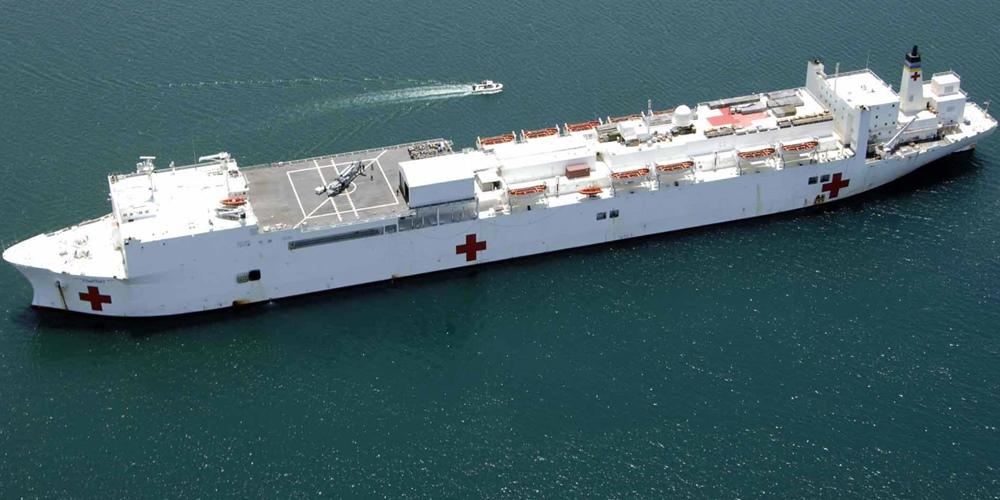Table Of Content

Norovirus, sometimes referred to as the “winter vomiting bug,” is a highly contagious virus that causes gastroenteritis, an inflammation of the stomach and intestines. Named after Norwalk, Ohio, where the first outbreak was identified in 1968, norovirus can lead to severe vomiting, diarrhea, stomach cramps, and, in certain cases, even more serious consequences such as severe dehydration. Norovirus has been a particular problem of late for cruise ships because passengers and crew typically occupy close -- and closed-in -- quarters, such as casinos, theaters and banquet-style dining rooms. However, Norovirus has been known to close schools, attack college dormitories and even infect a Hollywood Academy Awards party.
Best Travel Insurance Companies
Studies have shown that norovirus can continue to spread for two weeks or more after an infected person stops having symptoms of the illness, according to the CDC. Most people get better after a few days, but severe cases may require hospitalization. It only takes a small number of virus particles for norovirus to spread, which is why norovirus causes so many explosive outbreaks, Ko previously told TODAY.com. Norovirus can also get into food before, during or after preparation, and it's the top germ causing foodborne illness in the U.S., per the CDC. Virus particles can contaminate drinking water that isn't treated properly or pools when people poop in the water. Some people are at higher risk of developing severe norovirus symptoms — these include infants, the elderly, and people with compromised immune systems, Ostrosky noted.
How does norovirus spread on cruise ships?
According to the American College of Emergency Physicians (ACEP), every cruise ship must have a place to isolate any passengers who have a contagious disease. This step helps them minimize the risk of spreading the disease to others. Norovirus is the most common cause of gastroenteritis and foodborne illness. Though people often call it the “stomach flu,” it has nothing to do with flu, Brian Labus, PhD, MPH, REHS, an expert in infectious diseases, told Health.
Why do I only hear about Norovirus outbreaks on cruise ships?
Secondly, clean and disinfect high touch surfaces such as doorknobs, faucets, handles, and that statue of Dwayne “The Rock” Johnson in the dining hall. Use either a chlorine bleach solution that has a concentration of at least 1,000 to 5,000 parts per million or use a disinfectant that’s registered with the Environmental Protection Agency (EPA) as being effective versus norovirus. Cruise Critic members advise packing extra soap, a supply of Lysol and a bottle of Pepto-Bismol (just in case).

Such symptoms tend to emerge rather suddenly about one or two days after the virus has gone down your pie hole. While there have been 13 outbreaks of norovirus on cruise ships this year, Labus explained that not every cruise passenger is going to be exposed to the virus. Still, taking certain steps to prevent the likelihood of getting sick is never a bad idea.
How cruise lines are adapting to COVID-19 in the age of Omicron
The illness lasts 1 to 4 days, but some people (especially elderly) may be contagious for up to 2 weeks after recovery. Cruise Hive was established back in 2008 and among the earliest blogs in the industry. Since the start, it's been our aim to provide the latest cruise news covering all the major cruise lines.
The boarding/embarkation of new passengers is often delayed to permit more extensive disinfection of public areas and the cabins. Usually, a pre-embarkation health advisory is distributed to all boarding passengers. Additional med staff is sent to the ship in port to assist the disembarkation of infected passengers. Another possibility is the cruise ship to cancel all the itinerary's foreign ports of call and to return to its US home-port before the end of the voyage.
Find out why norovirus is unfairly labeled a cruise ship illness, what cruise lines do to minimize onboard spread and whether you should be worried about it on your next voyage. To quell the spread of the stomach bug, Silversea Cruises reportedly quarantined its impacted passengers and crew member and “increased cleaning and disinfection procedures,” the CDC said. The cause of the outbreak — which has impacted roughly 5% of the ship’s passenger population — is still unknown, but the CDC notes that norovirus outbreaks are primarily caused by eating contaminated food or drinking contaminated water. The cruise ship reported over 70 cases of norovirus during an October 8 to 13 sailing. The ship’s next batch of passengers were alerted while sanitary measures have been adopted to prevent another outbreak.
Norovirus outbreak leaves nearly 100 Celebrity cruise passengers sick - USA TODAY
Norovirus outbreak leaves nearly 100 Celebrity cruise passengers sick.
Posted: Fri, 12 Jan 2024 08:00:00 GMT [source]
The Centers for Disease Control and Prevention (CDC) reported a gastrointestinal viral outbreak that sickened several cruise ship guests earlier this week. Norovirus often isn’t just your typical I’m-feeling-a-little-sick-so-I-may-pass-on-shuffleboard type of gastroenteritis. No, a norovirus infection can consist of projectile vomiting and explosive diarrhea. Similarly, you’ve got to be careful about anything that could explode in your pants. “You must be diligent beyond your common understanding of when to wash your hands, because there are millions of norovirus particles spreading in various areas,” Boden-Albala says.
Since January 2023, there have been 13 confirmed norovirus outbreaks on cruise ships under U.S. jurisdiction — that's more outbreaks in six months than there have been during any full year since 2012, according to data from the U.S. The following "health advisory" list of recommended actions is often issued during gastrointestinal illness outbreak or on embarkation day (of the next scheduled voyage). It has important suggestions on how to avoid spreading the cruise ship virus infection. Norovirus is the most common of several viruses that cause severe gastrointestinal illness or acute gastroenteritis. Symptoms may include diarrhea and vomiting, as well as abdominal cramping, headaches, muscle aches and fever — an unpleasant experience any time but especially when you're on vacation.
It’s crucial for cruise lines, passengers, and health officials to remain vigilant, proactive, and informed to prevent and contain potential norovirus outbreaks. Although outbreaks may affect more than 100 passengers, the two most recent cases represented about 13 percent and 7 percent of guests, respectively. The CDC's "Vessel Sanitation Program" is for monitoring illness outbreaks on passenger ships carrying 100 or more guests on sailings from 3 to 21 days in length. This is done 24 hrs prior to arrival at any US port of call from a foreign port. This protocol only confirms that the CDC knows everything about it.
Norovirus is also known as the “Cruise ship virus” because conditions on cruise ships can stack the deck for the spread of norovirus, so to speak. Typically, a cruise ship will have dozens, hundreds, and in some cases thousands of people sharing surfaces, objects, food, drink, and who-knows-what-else over extended period of times. Norovirus is highly infectious, as I’ve described for Forbes previously. Plus, hand sanitizer and cleaning materials that don’t contain something more powerful like bleach may not get rid of the virus from a surface. There are also behind-the-scenes procedures that cruise lines must follow.
Norovirus is named after an outbreak that occurred in Norwalk, Ohio, in the late 1960s. Exposure to less than 100 norovirus particles can make someone sick, and infected people typically shed billions of particles, according to the CDC. There are no internationally specified regulations governing ship infirmaries and medical staffing.
In confined spaces with frequent passenger turnover (like big capacity cruise ships), it is easy for diseases to spread - whether food- or air-borne, or otherwise. However, there's a tendency to cover up the severity of this issue. The Mexican government said Tuesday it would allow cruise ships with reported coronavirus cases to dock. The country's Health Department said passengers or crew who show no symptoms will be allowed to come ashore normally, while those with symptoms or a positive virus test will be quarantined or given medical care. Norovirus outbreaks spiked on cruise ships this year, with data showing more outbreaks happened between January and June than over the course of any other full calendar year in the last decade.
Onboard actions have been taken to ensure good hygiene and minimize any further spreading of the illness, as well as to keep guests informed of the situation. "In close quarters it doesn't get away, everything's concentrated," Zimring says. Norovirus is the most common cause of gastroenteritis in the U.S., with between 19 to 21 million cases a year and more than 56,00 hospitalizations. For nearly 600 people sickened during a Royal Caribbean International cruise to the Caribbean, their vacation has been no day at the beach. The 11-deck cruise ship started its journey in Callao-Lima, Peru, on March 31 and is set to end on April 16. The CDC monitored the outbreak as the ship completed a 16-day sailing and docked at Port Everglades earlier this week.
Stick to bottled water, and don't share drinking glasses and eating utensils. Here's everything you need to know about Norovirus -- and how to avoid getting sick on your next cruise vacation. To see how your specific cruise line performed on its VSP inspections, you can visit the CDC website and search their portal. This site also lists any corrective actions taken to remedy any issues. She noted that hand sanitizers do not work well against norovirus and that they are not a substitute for handwashing. According to Shah, norovirus spreads rapidly anywhere there are large groups of people, like school classrooms, family gatherings, and weddings.

No comments:
Post a Comment